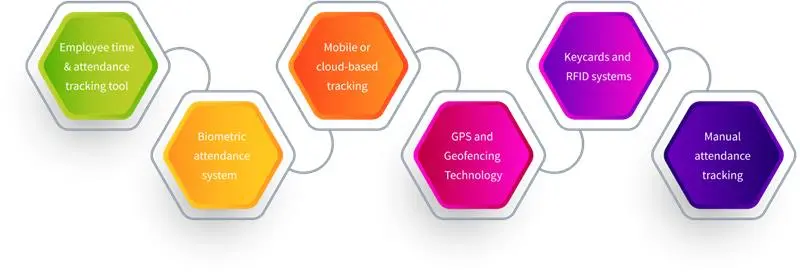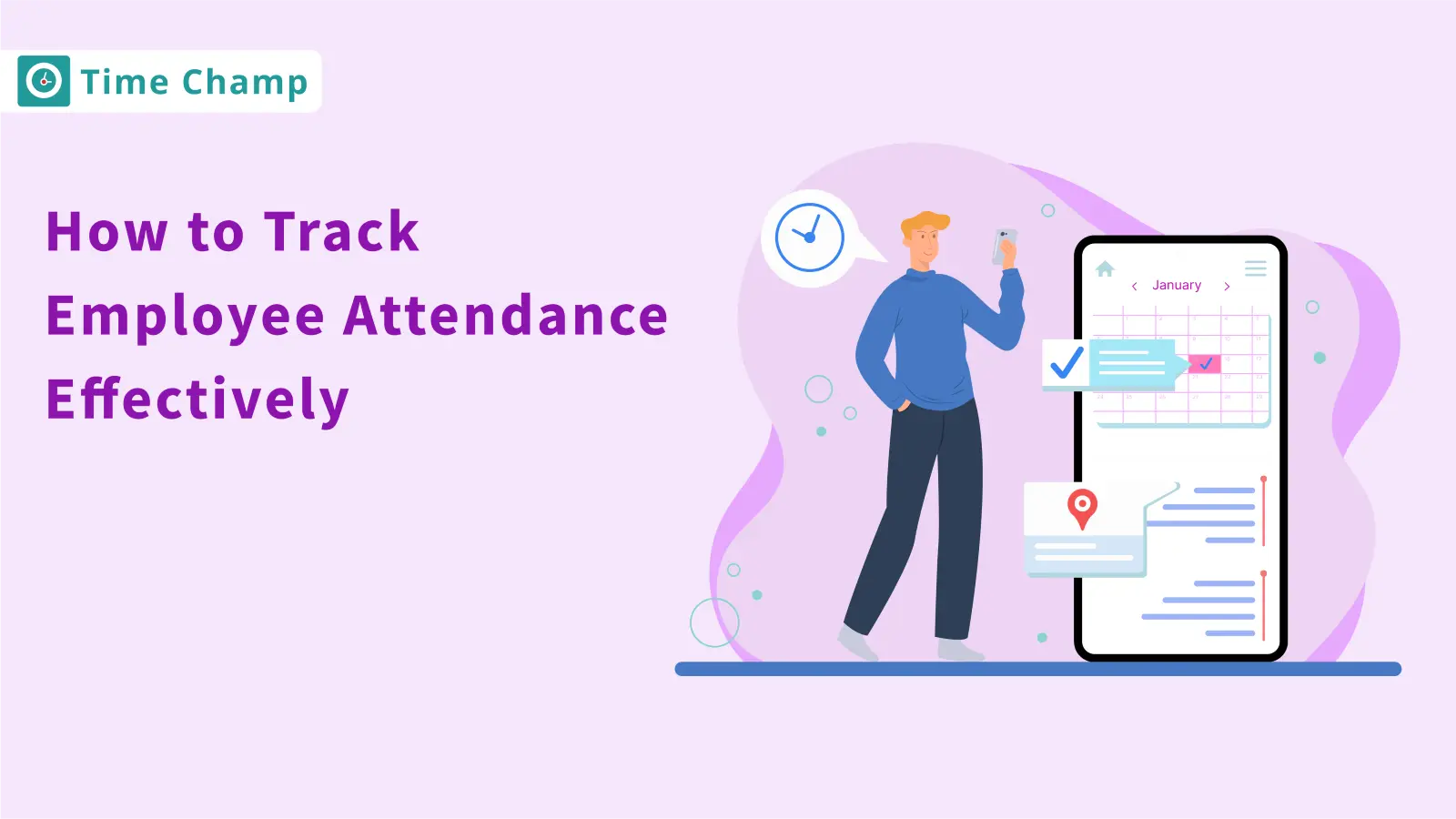Tracking employee attendance is essential for having an effective and accountable workplace. The foundation of any successful firm is its team. When employees arrive on time and regularly, they show enthusiasm, energy, and dedication in their work, which pushes them forward. Using the right methods, employees can develop a culture of dependability, responsibility, and long-term success.
What Does Employee Attendance Management Mean?
Employee attendance management monitors and controls employee work hours using a systematic time-tracking process. The system tracks the presence of an employee by recording when they start and end, as well as absences and late arrivals. Attendance management keeps track of how much time employees spend on the work to improve productivity.
Improving attendance involves not only following standards but also creating an environment in which employees feel valued, encouraged, and motivated to take part. Good attendance management systems allow organizations to calculate the payroll of employees and understand their needs. It keeps track of the working hours of employees to ensure productivity as well as equal treatment among them.
Why is Tracking of Employee Attendance Important?
Companies must track the employee attendance to boost efficiency, productivity of employees, and reliability. These are the main reasons why tracking employee attendance is crucial:
1. Boost Productivity and Accountability
Employee tracking systems help in improving the punctuality and focus among the employees by tracking the time records, which results in a higher productivity and accountability.
2. Improves Security and Accuracy
Tracking of the employee attendance improves the management of the team by finding when the right employees are present and reducing the risks in terms of security and maintaining an accurate attendance record.
3. Enable Remote Rork and Flexible Scheduling
Attendance tracking allows the employees with a flexible schedule to continue working from any area during any working hours while maintaining a functional connection.
4. Streamline Payroll and Reduce Errors
Payroll can be streamlined, and errors can be eliminated by using an effective attendance tracking system, which will enhance the payroll accuracy and ensure that all employees are paid fairly for the hours they have worked.
Effective Ways to Track Employee Attendance

Companies demand tracking of employee attendance to boost the productivity, maintain accountability, and speed up the payroll process. There are many effective ways for tracking of employee attendance that include:
1. Employee Time and Attendance Tracking Tool
The employee Time and Attendance tool provides an automated system that allows employees to track their attendance using the digital clocks. The system tracks employee work duration, break timings, absence records, and overtime hours to create an accurate payroll data. Software tools can connect with the HR systems, allowing employees to track the attendance patterns more simply and generate a detailed data. Time Champ is an excellent example of an employee time and attendance tool as it combines both the real-time monitoring and GPS tracking features with an easy integration of a payroll system.
2. Biometric Attendance System
A biometric attendance system correctly identifies the employees and logs their time by using traits like fingerprints, facial recognition, or iris scans. Buddy punching (where one person clocks in for another) can be removed with biometric attendance systems that only allow the employees to access their records based on their unique traits. This technology combines increased security with error reduction. Biometric technology helps companies to improve the attendance control while also collecting important data for evaluation of employee performance and the management of payroll.
3. Mobile or Cloud-based Tracking
Employees are increasingly working remotely as a result of the widespread use of mobile devices and cloud systems, which in turn demands the need of advanced attendance tracking tools. Employees can track their presence and absence at work using their mobile device or by checking their attendance record through the cloud interface, which makes attendance recording available from anywhere. Managers can now view real-time employee attendance data from anywhere, allowing them to better manage teams working in different time zones and areas.
4. GPS and Geofencing Technology
Geofencing and GPS tracking are mainly helpful for employees who are working remotely or in the outdoors. Managers can check on the attendance of on-site employees by using the GPS tracking and geofencing to track those areas that are assigned as their work areas. Integrating GPS tracking and geofencing produces a system that requires employees to arrive at their allocated places, improving their workplace accountability while lowering the waste of time.
5. Keycards and RFID systems
Employers track employee attendance using keycards and RFID (Radio Frequency Identification) systems, which require employees to scan their ID cards or tags at both the start and end of the workday. The system automatically tracks both the start and exit times, removing the need for a manual data entry. To handle many employees, the system must be fast, secure, and efficient. The implementation of RFID controls access to the approved areas using authorisation methods that ensure that only employees with the required access levels are allowed in.
6. Manual Attendance Tracking
Employees who use manual attendance tracking must manually mark logs and attendance sheets to record their presence. This attendance tracking process is typically implemented by small companies with limited resources, as well as workplaces that are lacking digital tools. Manual attendance tracking is simple for employers to use because it is cheap, but it can lead to errors due to incorrect entries and forgery. Manual tracking takes a lot of time for HR to verify and process the attendance records, especially in companies with a large number of employees. Whereas companies with a small workforce or limited financial resources continue to use manual tracking as their attendance system.
How to Improve Employee Attendance for a Better Workforce?
Increasing employee attendance is important to create a workforce that is both reliable and productive. Employees who work in a happy workplace with clear standards and flexible hours, as well as organisational support, are more likely to show up and stay focused on their tasks. Organisations can turn attendance issues into opportunities for growth by taking the right actions.
1. Set Clear Expectations
Employee reliability is built based on clear and consistent attendance goals. Employees need to have a clear understanding of punctuality in workplace and absence policies, as well as the leave procedures. To prevent confusion and maintain equality and responsibility throughout the team, the company should create an attendance policy that employees receive upon onboarding and have easy access to.
2. Find and Address the Causes of Absence
To effectively deal with the issue, it is necessary to find the causes of employee absence from work. Employee absences are mostly the result of burnout and disengagement, as well as personal reasons and workplace issues. Before adopting any kind of disciplinary procedures, you need to have open discussions with employees. Identifying the main causes of employee absences allows you to provide significant support to employees through wellness activities, task adjustments, and flexible scheduling, showing your true concern for them.
3. Provide Flexible Work
Companies can reduce employee absences by providing flexible work arrangements in terms of time and place. Flexible work solutions, such as remote work, flexible scheduling, and shift exchange, can help employees better manage their duties. Offering a flexible working arrangement encourages employee happiness and trust at work, improving job satisfaction and morale. Also, reduce stress-related absences from work and improve the ability of employees to maintain a balanced life at work and allow employees to be more engaged and productive while remaining present at work.
4. Create a Positive Workplace
The work environment plays an important role in improving the employee presence at work. Employees who feel valued, supported, and appreciated will be more dedicated to their work. Open communication, strong leadership and development opportunities, and an appreciation culture creates a workplace in which people actively want to work. When companies create trust and collaborative connections, absences are eliminated while teams grow stronger, more loyal, and productive.
Enhance your Attendance Management with Time Champ
Time Champ provides a great tool to effectively manage the attendance and leave of employees with utmost simplicity. It automates daily check-ins, keeps track of working hours, and provides detailed reports. Employees can request leaves via the platform, whereas managers obtain a clear, real-time representation of absences, overtimes, and shift patterns, simplifying approvals and keeping compliant with policies.
In addition to simplifying attendance, Time Champ integrates with payroll systems for error-free computations of salary as well as offers actionable insights with comprehensive reports. Regardless of whether the teams are remote, hybrid, or working in the office, Time Champ builds a culture of accountability and openness, which helps organizations make informed decisions and increases general workplace productivity.
Wrapping up
Creating a culture of trust, accountability, and well-being is more crucial for good attendance management than simply keeping track of hours spent. With Time Champ and a happy work environment, employers can enhance the productivity, reduce absences, and allow employees to grow at work. Investing in smart attendance practices now will create a more robust and trustworthy workforce for later. When employees feel valued and supported, they become more energetic, committed, and productive. Developing a stronger attendance standard now sets the base for long-term success and development.
Track Attendance, Boost Efficiency
Simplify attendance management with smart tools. Get started with Time Champ today.
Signup for FreeBook DemoFAQ’s
Yes! Remote teams can be tracked effectively without micromanagement by using tools like GPS tracking, cloud-based attendance tools, and scheduled check-ins, ensuring both flexibility and accountability.
Frequent absences by some workers can lead to increased workloads for others, which can lead to resentment, burnout, and frustration. A uniform attendance policy ensures equality and contributes to the maintenance of teamwork and confidence.
Yes. Employers must comply with labour laws related to privacy, overtime, and working hours. Employees should be informed about how their attendance will be tracked, data security must be ensured, and all legal limits on tracking should be strictly followed.
Yes! To guarantee equality and clarity, attendance policies should be modified regularly to reflect the changing work situations, such as changes to remote work or new labour laws.
Employers can inspire employees by praising and rewarding good attendance with awards, public recognition, bonuses, or small benefits. These actions inspire loyalty and give workers a sense of worth.






